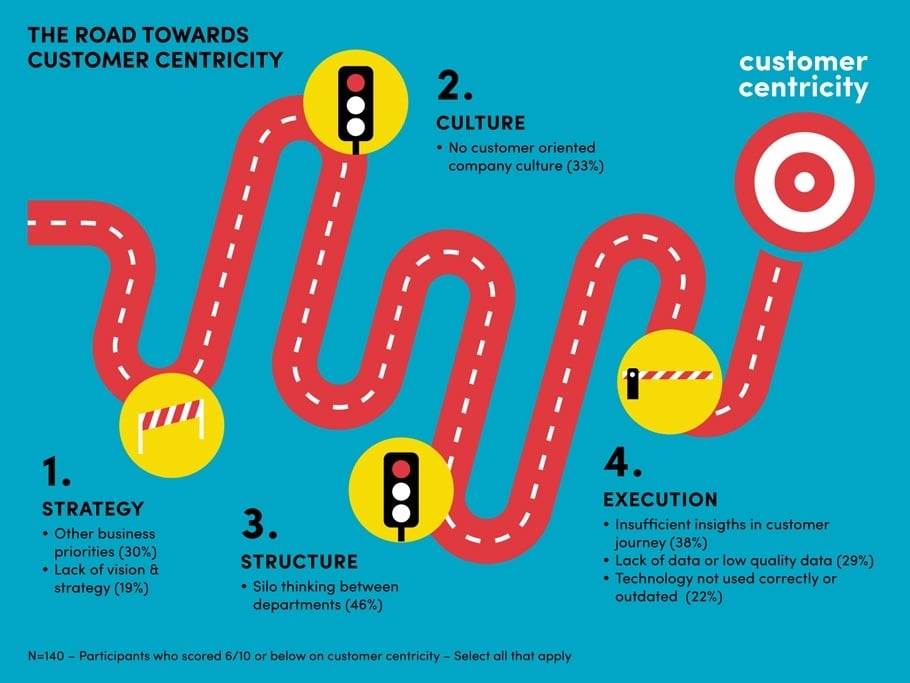Stop pretending: the time has come to act as a real customer-centric company!
How customer-centric are Belgian Marketers? In our Yearly Marketing Survey 20171 53% of Marketers claimed to have a very customer-centric company (scoring themselves 7 or more out of 10). However, digging deeper into the results, we were able to see that Belgian companies lack maturity in areas such as customer experience, organisational design and data strategy. So there is a clear delivery gap where marketers THINK they are customer-centric, but are clearly not acting on it.
We found that the main barriers to overcome on the road to customer centricity are setting the right business strategies, enabling a customer-centric culture or having sufficient and relevant customer data and insights to take the right business decisions. On this last point, the question is: how do we gather relevant data and customer insights?

At The House of Marketing, we are big fans of conjoint analysis as it could bring great insights for companies in their shift towards customer centricity.
What is a conjoint analysis?
To keep it short, we can define it as a marketing research technique that is used to study how customers make decisions regarding (complex) products or services. In practical terms, it looks like a normal survey but has quite some intelligence in it. Based on the answer a customer gives, the survey adapts its successive questions. That’s why we call it an interactive survey, customised to the preferences and opinions of each individual2. By asking customers to choose between different product concepts, it determines individual product preferences. Understanding exactly what your different customers want; isn’t that the dream of every marketer?
Fill in the form below to discover how conjoint analysis can help companies to fine-tune their segmentation and targeting, create unique value propositions, improve their product offering and pricing and, finally, tweak their communication messages.



